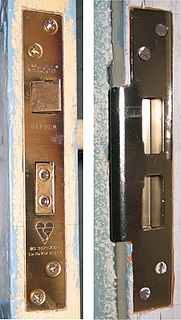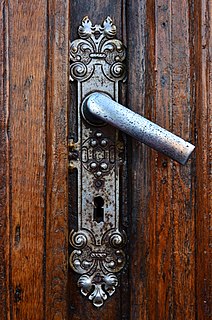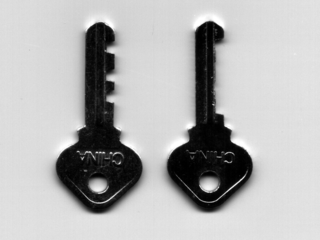
A machine gun is an auto-firing, rifled long-barrel autoloading firearm designed for sustained direct fire with fully powered cartridges. Other automatic firearms such as assault rifles and automatic rifles are typically designed more for firing short bursts rather than continuous firepower, and not considered machine guns. Squad automatic weapons, which fire the same cartridge used by the other riflemen from the same combat unit, are functionally light machine guns though not called so. Submachine guns, which are capable of continuous rapid fire but using handgun cartridges, are also not technically regarded as true machine guns.

A shotgun is a long-barreled firearm designed to shoot a straight-walled cartridge known as a shotshell, which usually discharges numerous small pellet-like spherical sub-projectiles called shot, or sometimes a single solid projectile called a slug. Shotguns are most commonly smoothbore firearms, meaning that their gun barrels have no rifling on the inner wall, but rifled barrels for shooting slugs are also available.

Lock picking is the practice of unlocking a lock by manipulating the components of the lock device without the original key.

A lathe is a machine tool that rotates a workpiece about an axis of rotation to perform various operations such as cutting, sanding, knurling, drilling, deformation, facing, and turning, with tools that are applied to the workpiece to create an object with symmetry about that axis.

A railroad switch (AE), turnout, or [set of] points (BE) is a mechanical installation enabling railway trains to be guided from one track to another, such as at a railway junction or where a spur or siding branches off.

A lock is a device used for raising and lowering boats, ships and other watercraft between stretches of water of different levels on river and canal waterways. The distinguishing feature of a lock is a fixed chamber in which the water level can be varied; whereas in a caisson lock, a boat lift, or on a canal inclined plane, it is the chamber itself that rises and falls.

A warded lock is a type of lock that uses a set of obstructions, or wards, to prevent the lock from opening unless the correct key is inserted. The correct key has notches or slots corresponding to the obstructions in the lock, allowing it to rotate freely inside the lock.

A lock is a mechanical or electronic fastening device that is released by a physical object, by supplying secret information, or by a combination thereof or only being able to be opened from one side such as a door chain.
A repeating rifle is a single-barreled rifle capable of repeated discharges between each ammunition reloads. This is typically achieved by having multiple cartridges stored in a magazine and then fed individually into the chamber by a reciprocating bolt, via either a manual or automatic action mechanism, while the act of chambering the round typically also recocks the hammer/striker for the following shot. In common usage, the term "repeating rifle" most often refers specifically to manual repeating rifles, as opposed to self-loading rifles, which use the recoil and/or blowback of the previous shot to cycle the action and load the next round, even though all self-loading firearms are technically a subcategory of repeating firearms.

A lever tumbler lock is a type of lock that uses a set of levers to prevent the bolt from moving in the lock. In the simplest form of these, lifting the tumbler above a certain height will allow the bolt to slide past.

A mortise lock is a lock that requires a pocket—the mortise—to be cut into the edge of the door or piece of furniture into which the lock is to be fitted. In most parts of the world, mortise locks are found on older buildings constructed before the advent of bored cylindrical locks, but they have recently become more common in commercial and upmarket residential construction in the United States. They are widely used in domestic properties of all ages in Europe.

A door handle or doorknob is a handle used to open or close a door. Door handles can be found on all types of doors including exterior doors of residential and commercial buildings, internal doors, cupboard doors and vehicle doors. There are many designs of door handle, depending on the appropriate use. A large number of handles, particularly for commercial and residential doors, incorporate latching or locking mechanisms or are manufactured to fit to standardised door locking or latching mechanisms.

A breechblock is the part of the firearm action that closes the breech of a breech loading weapon before or at the moment of firing. It seals the breech and contains the pressure generated by the ignited propellant. Retracting the breech allows the chamber to be loaded with a cartridge.

Padlocks are portable locks with a shackle that may be passed through an opening to prevent use, theft, vandalism or harm.

A latch or catch is a type of mechanical fastener that joins two objects or surfaces while allowing for their regular separation. A latch typically engages another piece of hardware on the other mounting surface. Depending upon the type and design of the latch, this engaged bit of hardware may be known as a keeper or strike.

A skeleton key is a type of master key in which the serrated edge has been removed in such a way that it can open numerous locks, most commonly the warded lock. The term derives from the fact that the key has been reduced to its essential parts.

A wafer tumbler lock is a type of lock that uses a set of flat wafers to prevent the lock from opening unless the correct key is inserted. This type of lock is similar to the pin tumbler lock and works on a similar principle. However, unlike the pin tumbler lock, where each pin consists of two or more pieces, each wafer in the lock is a single piece. The wafer tumbler lock is often incorrectly referred to as a disc tumbler lock, which uses an entirely different mechanism.

A mechanical watch is a watch that uses a clockwork mechanism to measure the passage of time, as opposed to quartz watches which function electronically via a small battery, or radio watches, which are quartz watches synchronized to an atomic clock via radio waves. A mechanical watch is driven by a mainspring which must be wound either periodically by hand or via a self-winding mechanism. Its force is transmitted through a series of gears to power the balance wheel, a weighted wheel which oscillates back and forth at a constant rate. A device called an escapement releases the watch's wheels to move forward a small amount with each swing of the balance wheel, moving the watch's hands forward at a constant rate. The escapement is what makes the 'ticking' sound which is heard in an operating mechanical watch. Mechanical watches evolved in Europe in the 17th century from spring powered clocks, which appeared in the 15th century.
Door breaching is a process used by military, police, or emergency services to force open closed and/or locked doors. A wide range of methods are available, one or more of which may be used in any given situation. Regarding the use of specified tools for forcible entry, there are several other methods of door breaching. These methods may be divided up into mechanical breaching, ballistic breaching, hydraulic breaching, explosive breaching, and thermal breaching.
This is a glossary of locksmithing terms.



















